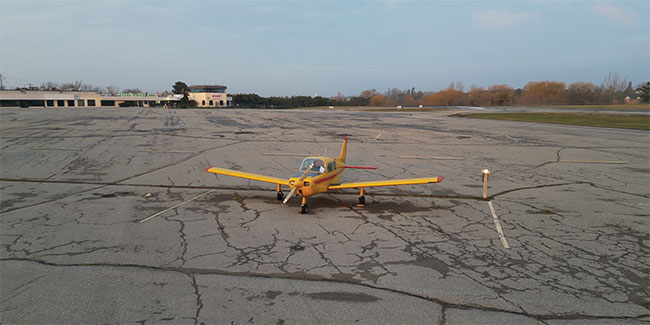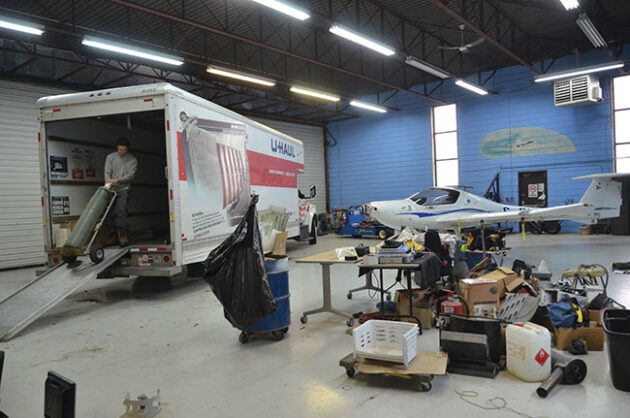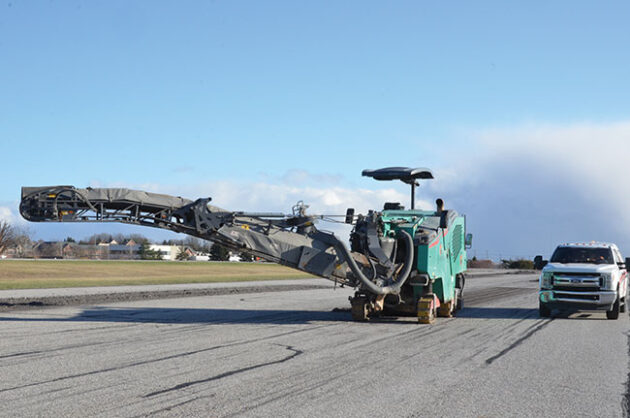
Features
Airports
The last aircraft at Buttonville
A deeper economic challenge for Greater Toronto with the end of CYKZ
February 6, 2024 By Mark Brooks
 An abandoned Beech 19 Musketeer sits alone during the last days of Buttonville Airport in Toronto. (Photo: Phil Lightstone)
An abandoned Beech 19 Musketeer sits alone during the last days of Buttonville Airport in Toronto. (Photo: Phil Lightstone) The closure of Toronto Buttonville Municipal Airport, CYKZ, is now a distant memory. In its heyday, Buttonville was one of Canada’s busiest airports, ranking the second busiest airport in Ontario and the sixth busiest in Canada. The airport’s hangars now stand empty, the terminal building deserted, the runways no longer usable and only one aircraft remained. A single Beech 19 Musketeer remained tied down on the main ramp, abandoned by its owner.
A workhorse of flight training, the Musketeer is a fitting symbol of Buttonville’s lost access to the skies. The aircraft owner cancelled the aircraft’s registration in March of 2022. It is reported that the owner has not paid his tiedown, maintenance and instructor bills for a substantial period. With the aircraft owner not responding to the airport management’s telephone calls and emails, a lien was placed on the aircraft. This allows airport management to begin the process to have the aircraft removed from the property. With Buttonville closed, it’s operating certificated handed in and runways closed, the 1976 Musketeer is destined to have its wings removed and trailered off the property.
The aircraft was last flown by the owner and a flight instructor roughly one year ago. The flight instructor, who wishes to remain anonymous, reports that the aircraft flew well with the engine producing copious amounts of power. However, based upon the weight of the owner and instructor, the aircraft required weight to be placed into the luggage compartment to get the aircraft’s centre of gravity into the flight envelope. On Trade-A-Plane, there are 19 Beech 19’s listed with prices ranging from US$40,000 to $114,000. A back-of-the-napkin budget could see US$95,000 required for a new interior, paint, avionics and engine. The future resale value of the aircraft, for someone interested in flipping the aircraft, make the project break even at best. The flight instructor is investigating purchasing the Beech and partnering with an AME with the goal of getting the aircraft airworthy.

Air Partners packs up its maintenance hangar after 25-plus years of operation at the airport. (Photo: Phil Lightstone)
A growing demand for air travel and the loss of local accessible flight training airports like Buttonville is creating an intense pilot shortage in Canada. From a grass field in the 1950s to its closure, Buttonville helped to train more than 10,000 commercial pilots. Many of the pilots flying today for Air Canada, WestJet and Porter Airlines had their start at Buttonville.
Buttonville Airport can be viewed as a victim of its own success. A profitable privately owner airport, it provided General Aviation (GA) access to the Greater Toronto Area. The airport’s profitability removed the pressure on the Canadian Federal Government obligation to fund public aviation infrastructure. Local business thrived at the airport. According to a 2009 study by Malone Given Parsons Ltd., the airport’s activity created 550 jobs and added at least $96 million a year to the local economy. The airport was home to a flight college, medivac companies, news media and police helicopters, maintenance shops, as well as hundreds of GA and business aviation aircraft.
Transportation systems are a cornerstone of any city. Aviation is the second largest carrier of goods and services (by value) throughout the world. In 20 years, it will be number one, dominating everything we do. Without new aviation infrastructure, our region’s economic success may come to an end. One must compare Toronto to other comparable industrialized cities in North America to see our problem. The GTA is grossly under serviced by a limited number of airports. Devoid of local and federal leadership, our aviation facilities continue to move in the wrong direction. Our political leaders need to recognize that aviation connects and moves the world. Without local accessible aviation infrastructure, a city’s economy may falter. The GTA’s future has been diminished by Buttonville’s closing.

Paving machinery grinds markings off of Runway 15/33 at Buttonville Airport, making the runway unusable. (Photo: Phil Lightstone)
Despite its economic value, importance to national aviation and the desperate need for new commercial pilots, Buttonville Airport is being redeveloped. Toronto’s industrial land and housing shortage has incentivized the private owners to redevelop the land. A sea of warehouses, including at least one for Amazon, is set to replace the airport. Warehouses ironically filled with goods from all over the world, delivered by air.
The last aircraft at Buttonville is expected to be disposed of shortly. No doubt abandoning and deregistering the aircraft made financial sense to the owner of the Musketeer. He dumped a broken aircraft on a packed ramp for others to deal with. Like closing the airport, it was a short-sighted decision creating a burden on others in the future.
Land has been set aside for a new airport in nearby Pickering. But indecision plagues a confused Canadian federal government. Volunteers from the Buttonville Flying Club, COPA Flight 44, have created the website PickeringAirport.org to fight misinformation and highlight the need for the new airport. The closure of Buttonville should stand out as a warning and a call to action; Its last Musketeer a fitting symbol of what is being lost by inaction. This trend continues with the looming closure of the Toronto Downsview Airport, CYZD, sadly using the airport closure plan created at Buttonville as a template.
Mark Brooks is a 7,000 hour commercial pilot and flight instructor. Phil Lightstone contributed to this report.